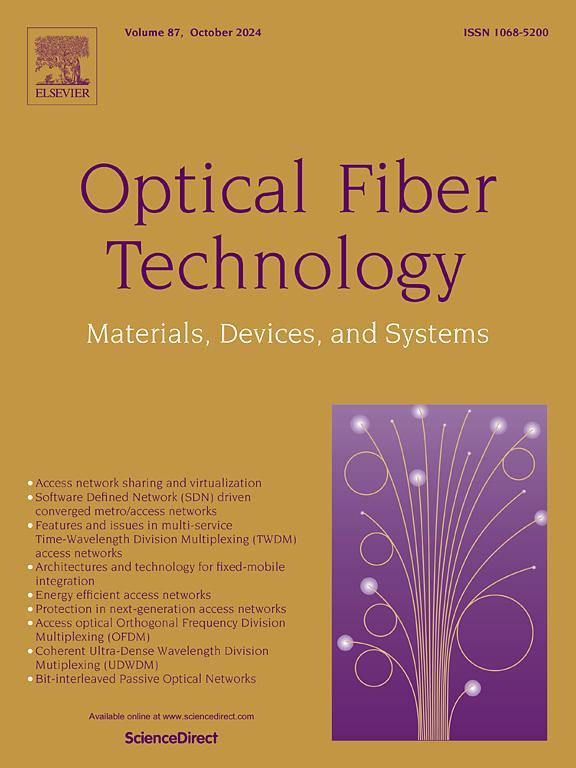Harmonic mode-locking in All-PM Er-doped fiber laser NALM configuration
IF 2.7
3区 计算机科学
Q2 ENGINEERING, ELECTRICAL & ELECTRONIC
引用次数: 0
Abstract
It is known that passive harmonic mode-locking (HML) is a widely used technique to achieve high pulse repetition rates in fiber lasers. We present, to the best of our knowledge, the first demonstration of harmonically mode-locked Er-doped fiber laser with sub-GHz repetition rate based on a nonlinear amplified loop mirror (NALM). This fully spliced, polarization-maintaining (PM) fiber configuration operates in a self-starting regime, delivering high-frequency pulse trains with significantly enhanced stability against environmental perturbations. The laser achieves a maximum pulse repetition rate (PRR) of ∼ 630 MHz, corresponding to the 242nd cavity harmonic. Furthermore, we apply a supermode noise mitigation technique using continuous-wave (CW) injection from an external narrow-band source successfully stabilizing the HML operation and reducing timing jitter by more than a factor of two across the entire range of observed repetition rates. This novel design provides a robust, adjustment-free solution for high-frequency operation with exceptional stability, meeting the demands of precision and reliability required for advanced applications.
全pm掺铒光纤激光器NALM结构中的谐波锁模
无源谐波锁模(HML)是一种广泛应用于光纤激光器的高脉冲重复率技术。据我们所知,我们首次展示了基于非线性放大环路镜(NALM)的重复频率低于ghz的谐波锁模掺铒光纤激光器。这种完全拼接的偏振维持(PM)光纤配置在自启动状态下工作,提供高频脉冲序列,显著增强了抗环境扰动的稳定性。激光器的最大脉冲重复率(PRR)为~ 630 MHz,对应于第242腔谐波。此外,我们应用了一种超模降噪技术,使用来自外部窄带源的连续波(CW)注入,成功地稳定了HML操作,并在整个观测到的重复率范围内将时序抖动减少了两倍以上。这种新颖的设计为高频操作提供了一个强大的,无需调整的解决方案,具有卓越的稳定性,满足先进应用所需的精度和可靠性要求。
本文章由计算机程序翻译,如有差异,请以英文原文为准。
求助全文
约1分钟内获得全文
求助全文
来源期刊

Optical Fiber Technology
工程技术-电信学
CiteScore
4.80
自引率
11.10%
发文量
327
审稿时长
63 days
期刊介绍:
Innovations in optical fiber technology are revolutionizing world communications. Newly developed fiber amplifiers allow for direct transmission of high-speed signals over transcontinental distances without the need for electronic regeneration. Optical fibers find new applications in data processing. The impact of fiber materials, devices, and systems on communications in the coming decades will create an abundance of primary literature and the need for up-to-date reviews.
Optical Fiber Technology: Materials, Devices, and Systems is a new cutting-edge journal designed to fill a need in this rapidly evolving field for speedy publication of regular length papers. Both theoretical and experimental papers on fiber materials, devices, and system performance evaluation and measurements are eligible, with emphasis on practical applications.
 求助内容:
求助内容: 应助结果提醒方式:
应助结果提醒方式:


